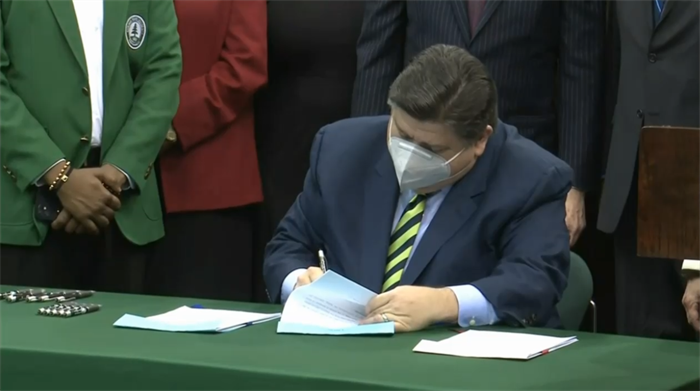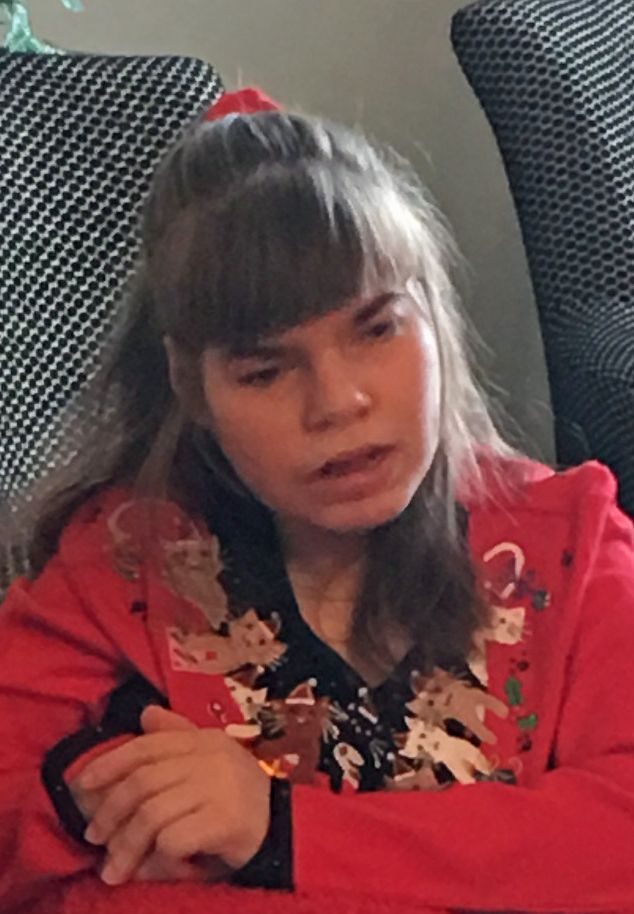Pritzker signs final first-term budget ahead of reelection push; $46 billion plan aided by pandemic-driven shifts in consumer spending

SPRINGFIELD – Gov. JB Pritzker signed his final first-term budget into law Tuesday, a roughly $46 billion spending plan buoyed by pandemic-driven revenue windfalls and a current-year surplus that helped the state pay down debts and offer temporary tax relief.
Between the three budget-related bills signed Tuesday – House Bill 900, House Bill 4700 and Senate Bill 157 – as well as a supplemental appropriations bill Pritzker signed last month – Senate Bill 2803 – the plan includes $500 million beyond statutory requirements to the state’s beleaguered pension funds; $1 billion to the state’s “rainy day” fund which currently has a balance of just $27 million; and an estimated $1.8 billion in tax relief, much of which is temporary.
At a signing event at Chicago State University, Gov. JB Pritzker touted the spending plan as proof of his fiscal leadership as he seeks a second term, contrasting the three-plus years under his leadership with that of his Republican predecessor, Bruce Rauner.
“Do you remember just five years ago when our state was held hostage by the former governor and the majority of the Republican Party?” Pritzker asked rhetorically. “Violence interruption programs were destroyed. DCFS shutdown 500 residential beds for our state’s most vulnerable children. The developmentally disabled were forgotten. Our state’s unpaid backlog of bills piled up to nearly $17 billion and our state suffered eight credit downgrades while sending five of our universities into junk credit status.”
Rauner presided over a 736-day budget impasse in which he and Democrats in the General Assembly failed to bridge ideological gaps to pass a state budget. During that period, court-mandated spending continued at a pace that was billions of dollars more than available revenues, due in large part to the rollback of a temporary tax hike that occurred just before Rauner took office.
Pritzker beat Rauner by 16 percentage points in the 2018 election, and he and Democrats have highlighted the impasse and played up the differences between the two administrations throughout Pritzker’s first term in an effort to claim the mantle of the party of fiscal responsibility in Illinois.
It’s a contrast that Pritzker’s campaign has highlighted in television advertising, noting the state has seen credit upgrades from two ratings agencies since he took office and paid down the bill backlog to a regular 30-day billing cycle.
That’s on top of a March debt retirement plan that saw the state dedicate $898 million to pay down old health insurance bills that were collecting interest and $230 million to fully fund the state’s College Illinois program.
The budget also includes $1.8 billion in tax relief, including a one-year suspension on the state’s grocery tax ($400 million), A one-time 5 percent property tax rebate up to $300 per household ($520 million), and a 10-day sales tax holiday for back-to-school items and clothing from Aug. 5-14 ($50 million).
Another $685 million would fund one-time direct rebate checks at $50 per individual and $100 per dependent, up to three, for individuals earning $200,000 or less or joint filers earning $400,000 or less.
While that relief was temporary, the budget also permanently increased the earned income tax credit from 18 to 20 percent of the federal credit while expanding the program to noncitizens who have an individual taxpayer identification number rather than a Social Security number. That program would cost about $100 million.
The state’s statutory annual motor fuel tax increase will be delayed for six months this year, costing about $70 million.
Republicans in the General Assembly opposed the spending portions of the budget but largely supported the tax relief proposals, even though they criticized them as being temporary.
“This budget is nothing more than a campaign tool for Pritzker and the Democratic Party,” Senate Minority Leader Dan McConchie, R-Hawthorn Woods, who voted for the tax relief plan, said in a statement. “Providing one-time checks to people in the mail right before their names appear on the ballot and expire right after the election is a disgrace.”
While Democrats have generally praised themselves for fiscal stability, Pritzker’s Department of Revenue in a February committee presentation noted that much of the unforeseen state revenue growth was a result of pandemic-related shifts in consumer spending and other federal aid, either directly or indirectly.
Revenues for the current fiscal year were about $5 billion higher than originally budgeted last year, creating surpluses that allowed for the flexibility in the FY 2023 spending plan.
That was largely driven by increases to the state’s personal and corporate income taxes, as well as sales taxes, as consumers purchased more taxable goods than untaxed services amid the COVID-19 pandemic.
On top of that, the federal government made direct payments to Illinoisans and provided for additional unemployment benefits which are taxable at the state level, further boosting state coffers.
The revenue windfalls have created the opposite reality of one that Pritzker had predicted would come to fruition if voters rejected his graduated income tax proposal in November 2020.
After that initiative which would have taxed higher income Illinoisans at a higher rate failed by a 53-47 margin, Pritzker said “painful” budget cuts were unavoidable.
Rep. Tom Demmer, R-Dixon, who is a candidate for state treasurer, contrasted the governor’s dire warnings with the financial picture put forth by Democrats in an election year that will see every statewide office and seat in the General Assembly up for grabs.
“You were bailed out by billions in additional funding from the federal government in Medicaid matching funds. You were bailed out by, across the country, trillions of dollars that were injected into our economies that led to higher-than-expected collections in revenue for the state temporarily,” he said during floor debate.
“So as we look at this year’s budget, and we try to ask which direction is it heading in, it’s growing spending faster than we’re growing revenues,” he added. “It ignores the fact that voters rejected a tax increase. And when this one-time revenue dries up, the only thing you’ll know how to do is go back and raise taxes yet again.”
Democrats, on the other hand, have tried to paint Republicans as voting against fiscal stability.
“Balancing the budget allows us to save for the future and live up to our financial obligations,” Pritzker said Tuesday. “On all of these things, the only members of the General Assembly who voted to kick the can down the road and stick you and your children with the bill were the Republicans who voted against it.”
As well, in an election year in which Republicans are relentlessly campaigning on a platform that pits Democrats as weak on crime, Sen. Elgie Sims, a Chicago Democrat, tried to flip the script.
“There are those who are standing on the sideline talking about crime is increasing, but they are the ones who would only want voting to defund police,” Sims said at the Tuesday bill signing. “They don’t vote for additional investments in creating public safety initiatives that will truly make our communities safer.”
Democrats touted $240 million in spending – $235 million of which came from federal American Rescue Plan Act funding – for violence reduction programs; funding for 300 additional Illinois State Police troopers; $30 million for the Violent Crime Witness Protection Program; $30 million for police body camera grants; $20 million in grants for less lethal devices and training; $10 million for a local law enforcement retention grant program; and $20 million for cameras and automatic license plate readers on state routes, among other public safety spending.
Republicans have focused their rhetoric on a January 2021 criminal justice reform known as the SAFE-T Act, which, among other things, overhauled police training and certification standards and authorized the end of cash bail in Illinois beginning in January 2023.
Miss Clipping Out Stories to Save for Later?
Click the Purchase Story button below to order a print of this story. We will print it for you on matte photo paper to keep forever.

